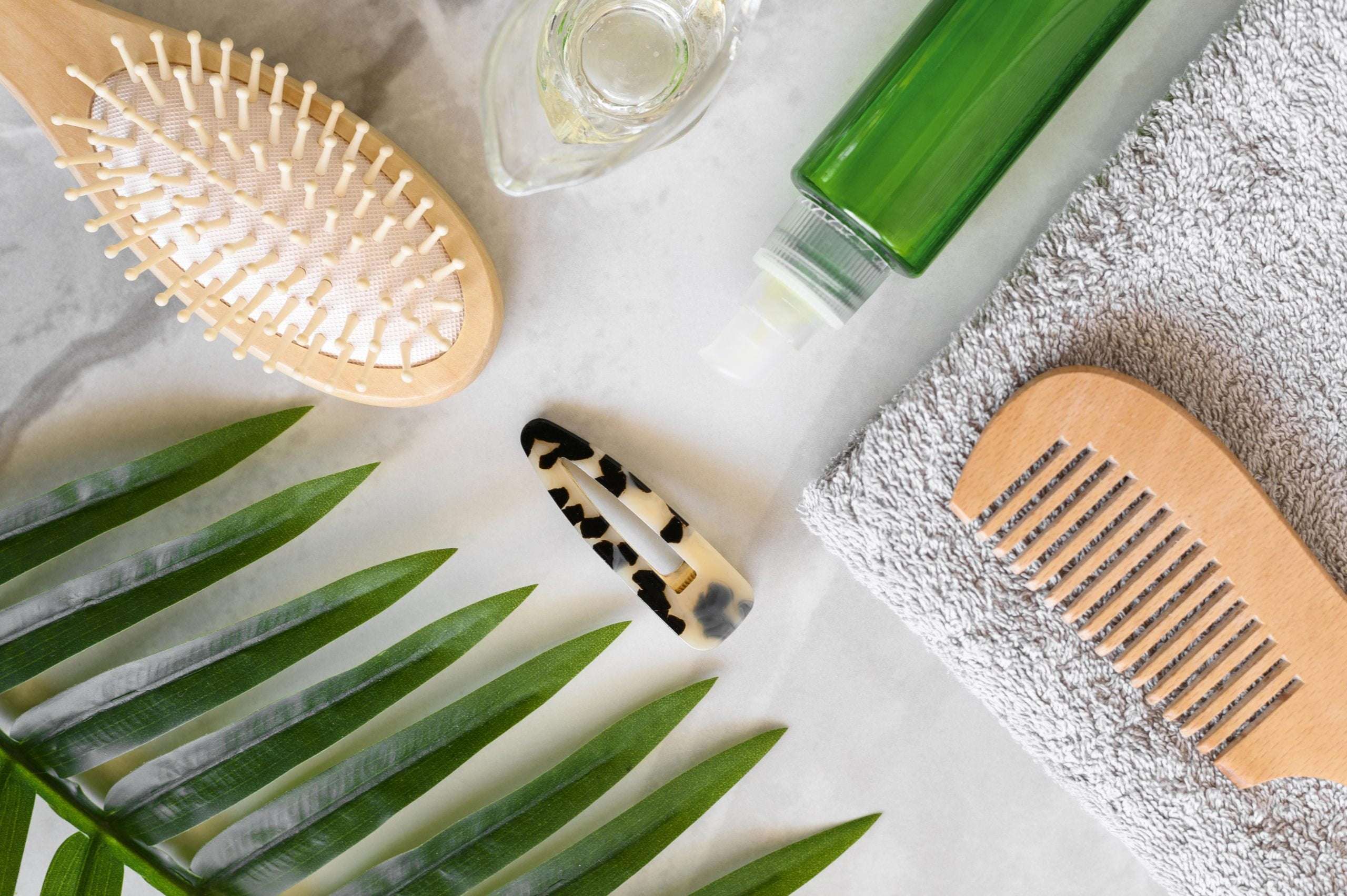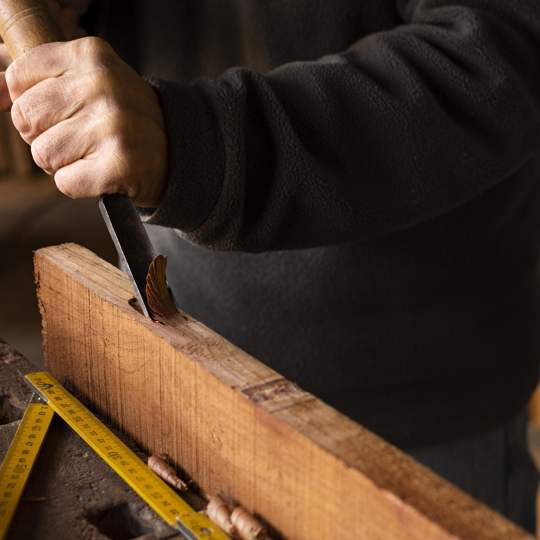
Bamboo hair brushes have gained popularity in recent years as a natural and eco-friendly alternative to traditional hair brushes. But are they really good for your hair? In this article, we will explore the benefits of bamboo brushes and discuss why they are a great choice for maintaining healthy and beautiful hair.
Introduction
Your question might be: does a bamboo brush help hair growth? When it comes to hair care, using the right tools is essential. Traditional hairbrushes are often made of plastic or synthetic materials, which can cause friction and damage to the hair. Bamboo hair brushes, on the other hand, offer a natural and sustainable alternative that is gentle on your locks.
Understanding Bamboo Hair Brushes
Bamboo brushes are crafted from bamboo, a fast-growing and renewable resource. A number of materials, including bamboo fibers, boar bristles, or a combination of both, can be used to create the bristles. These brushes are designed to detangle hair, stimulate the scalp, and distribute natural oils for healthier and shinier locks.
Benefits of Bamboo Hair Brushes

1. Environmentally Friendly:
One of the key advantages of bamboo brushes is their eco-friendly nature. Bamboo is a sustainable material that grows rapidly and requires minimal resources for cultivation. Unlike plastic brushes that contribute to pollution and waste, bamboo brushes are biodegradable and have a smaller carbon footprint.
2. Gentle and Anti-Static:
Bamboo hair brushes are known for their gentle bristles that glide smoothly through the hair without causing static or breakage. The natural properties of bamboo fibers help to reduce frizz and flyaways, leaving your hair looking sleek and well-managed. Additionally, the soft bristles are suitable for all hair types, including sensitive scalps.
3. Scalp Stimulation:
Regular brushing with a bamboo hair brush can provide a soothing massage to your scalp. The bristles gently stimulate the hair follicles, promoting blood circulation and encouraging healthy hair growth. This scalp massage also helps to relax and relieve tension, making it a relaxing self-care ritual.
4. Distribution of Natural Oils:
One of the unique features of bamboo hair brushes is their ability to distribute natural oils from the scalp to the ends of the hair. As you brush, the bristles collect the oils and evenly distribute them, preventing the hair from becoming dry or brittle. This natural conditioning effect enhances the shine and luster of your hair.
5. Durable and Long-Lasting:
Bamboo brushes are known for their durability and longevity. Bamboo is a strong and resilient material that can withstand daily use without losing its shape or effectiveness. By investing in a high-quality bamboo brush, you can enjoy its benefits for an extended period, reducing the need for frequent replacements.
6. Suitable for All Hair Types:
Whether you have straight, curly, thick, or fine hair, bamboo hair brushes can cater to all hair types. The flexibility of the bamboo bristles allows them to gently glide through different hair textures without causing damage or discomfort. It’s also worth noting that people with very thick or curly hair may choose to invest in a brush made for their needs, such as one with wider-spaced bristles.
Related: Are Wooden Brushes Good for Curly Hair?
Choosing the Right Bamboo Hair Brush

When selecting the best bamboo hair brush, there are a few factors to consider to ensure it meets your specific needs.
Bristle Types:
Different bristle types offer varying benefits. For gentle detangling and scalp stimulation, opt for brushes with bamboo fiber bristles. If you desire additional shine and hair-smoothing effects, consider brushes with a combination of bamboo fiber and boar bristles.
Size and Shape:
You should choose the size and shape of the brush based on your hair length and desired styling. Larger brushes with wider bristle spacing are suitable for long and thick hair, while smaller brushes work well for shorter or finer hair.
Handle Design:
Consider the handle design for comfortable grip and control. Look for brushes with ergonomic handles that fit well in your hand and allow for easy maneuvering during styling.
Maintenance:
Ensure that the brush is easy to clean and maintain. Opt for brushes with removable bristle pads or cushioning, as they allow for easy cleaning and drying to maintain hygiene.
How to Use a Bamboo Hair Brush

To make the most of your bamboo hair brush, follow these tips for proper usage:
Brushing Techniques:
Start brushing from the ends of your hair and gradually work your way up to the roots. This helps to prevent tugging and breakage. Use gentle, sweeping motions, and avoid aggressive brushing. Remember to be patient and take your time to detangle knots and distribute natural oils evenly.
Cleaning and Care:
Clean your bamboo hair brush regularly to remove hair, dust, and product buildup. Use a comb or your fingers to remove loose hair from the bristles. For a deeper clean, wash the brush with mild shampoo and warm water. Allow it to air dry completely before using it again. Learn more
Common Misconceptions About Bamboo Hair Brushes

While bamboo brushes offer numerous benefits, there are a few misconceptions worth addressing:
1. Limited Styling Options:
Contrary to popular belief, bamboo brushes can be used for various hairstyles and textures. They can be used for detangling, smoothing, and even creating volume. Experiment with different techniques and products to achieve your desired style.
2. Unsuitable for All Hair Types:
Bamboo hair brushes are suitable for most hair types, including curly, straight, thick, and fine hair. However, individuals with extremely thick or curly hair may find brushes with a combination of bamboo fiber and boar bristles more effective for detangling and managing their hair.
Tips for Maintaining a Bamboo Brush
Proper care and maintenance are vital for extending the lifespan of your bamboo brush. Follow these tips to ensure its longevity:
- Remove any hair strands or debris from the bristles regularly. You can use a comb or your fingers to gently remove any trapped particles.
- Clean your bamboo brush periodically by rinsing the bristles with warm water and a mild shampoo or gentle soap. Avoid soaking the bamboo handle, as excessive moisture can cause damage.
- After cleaning, rinse the brush thoroughly and allow it to air dry completely before using it again.
- Store your bamboo brush in a dry place away from direct sunlight to prevent any potential warping or damage.
Conclusion
In conclusion, bamboo hair brushes are an excellent choice for promoting healthy hair. They offer numerous benefits such as being environmentally friendly, gentle on the hair and scalp, and distributing natural oils. By selecting the right bamboo hair brush and following proper brushing techniques, you can enjoy the advantages of this natural and sustainable hair care tool.
FAQs
Are bamboo hair brushes suitable for sensitive scalps?
Yes, these brushes with soft bristles are gentle on sensitive scalps and can provide a soothing massage.
Do bamboo brushes cause static in the hair?
No, these brushes help reduce static and frizz, leaving your hair smooth and manageable.
can you use a bamboo brush on wet hair?
Experts recommend using bamboo brushes on dry or slightly damp hair to prevent breakage.
Are bamboo hair brushes durable?
Yes, bamboo brushes have a reputation for their durability and can last for a long time with proper care.
Can bamboo brushes be used on all hair types?
These brushes are suitable for most hair types, including straight, wavy, curly, thick, and fine hair.




































